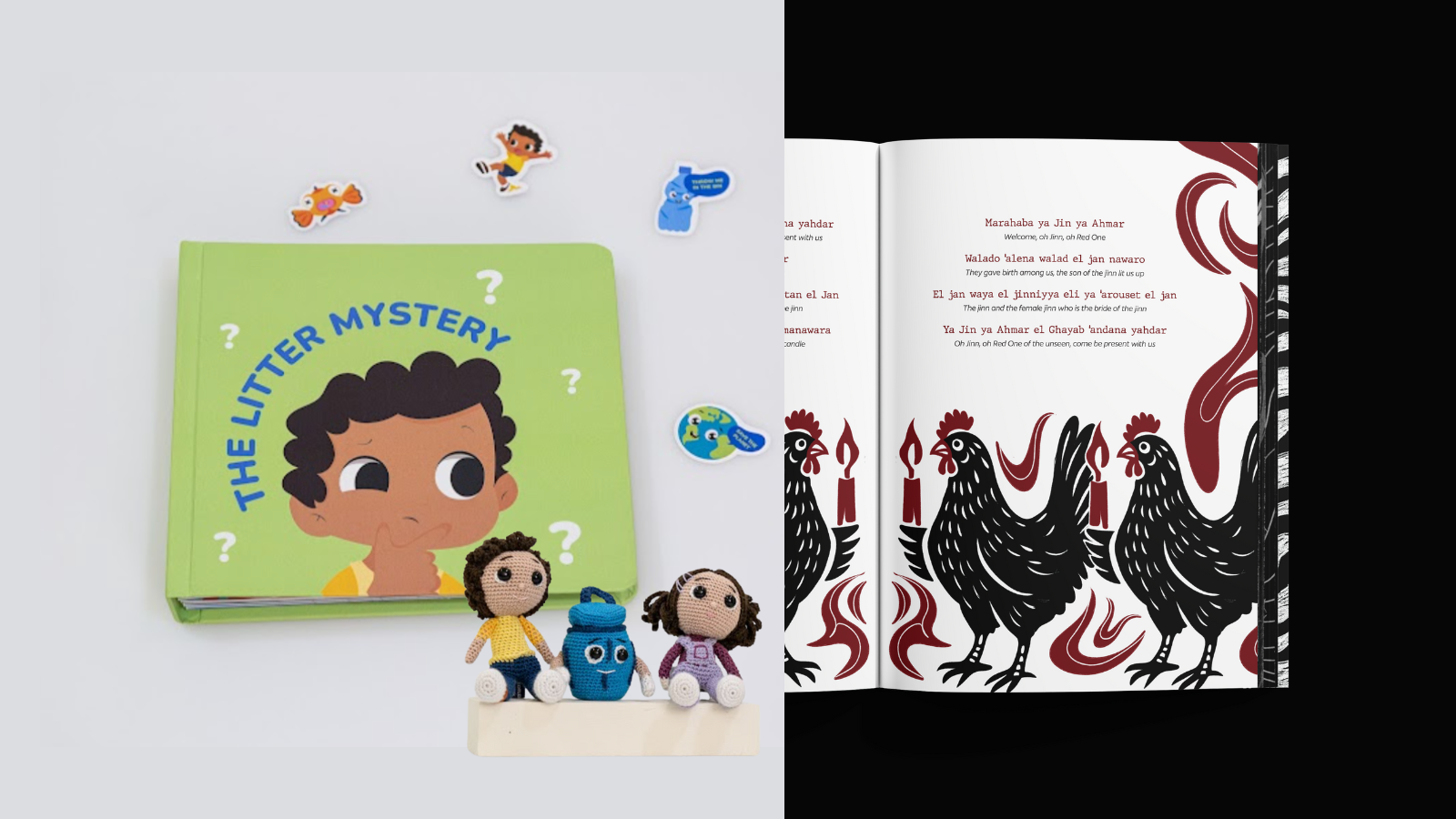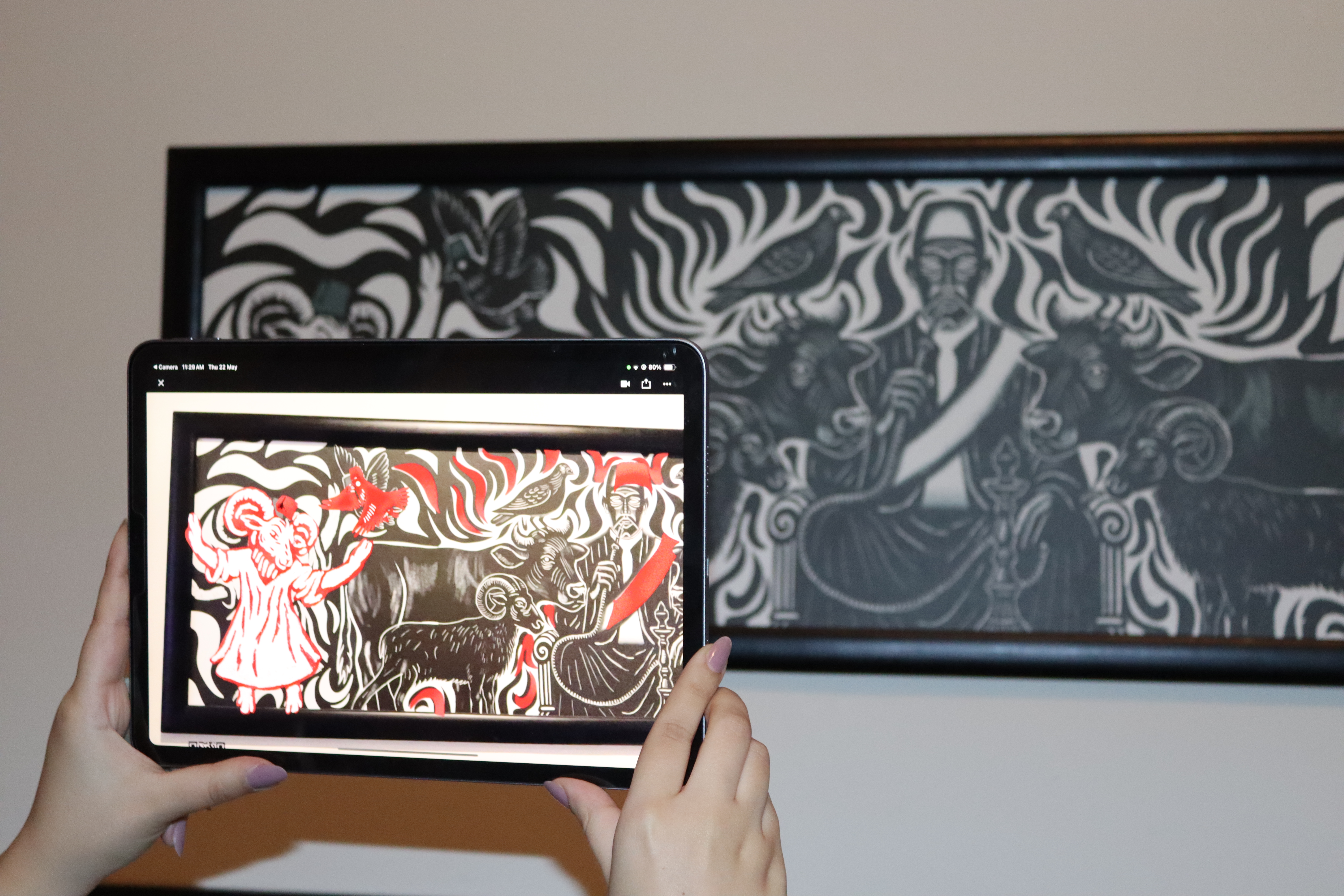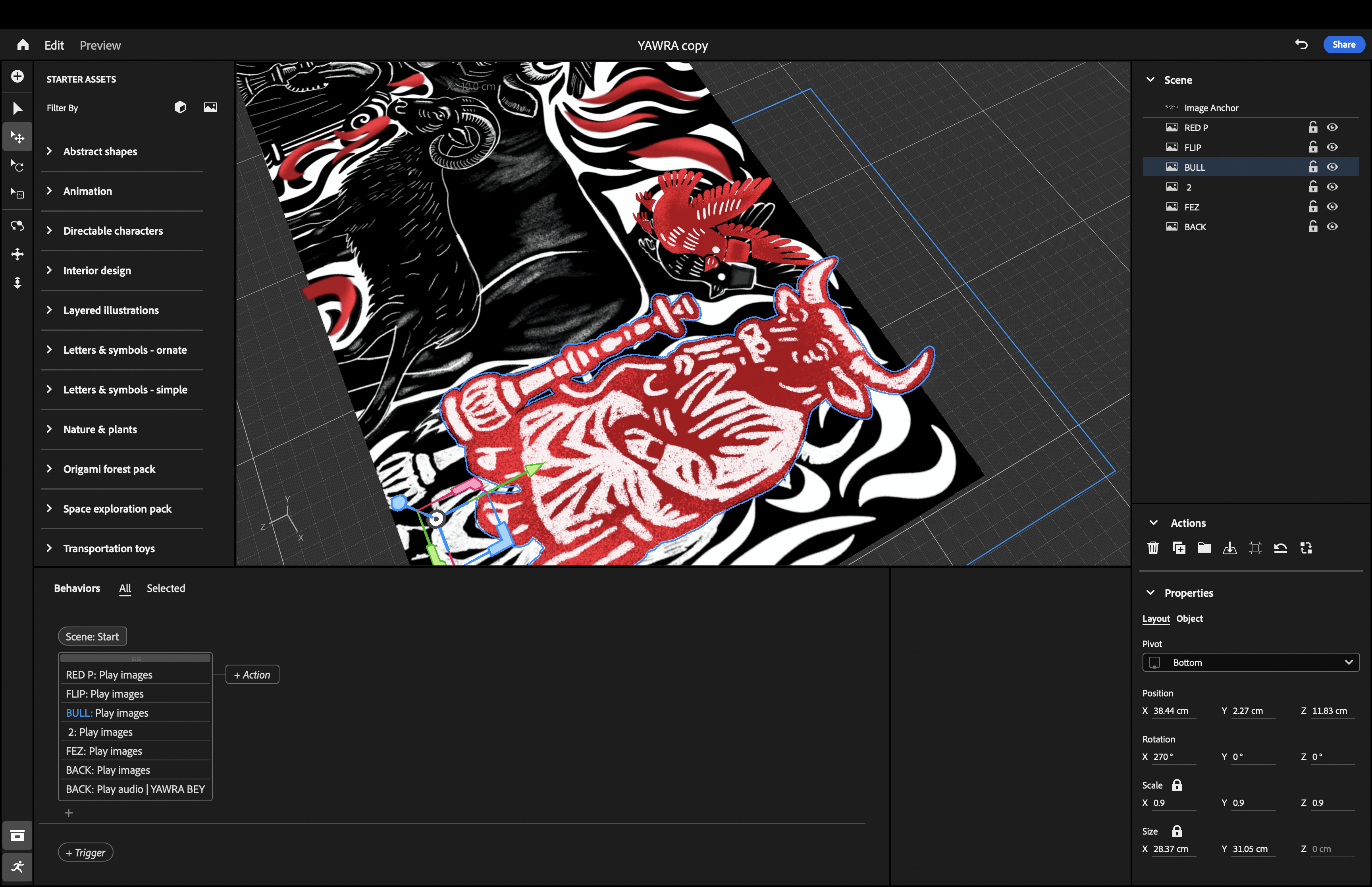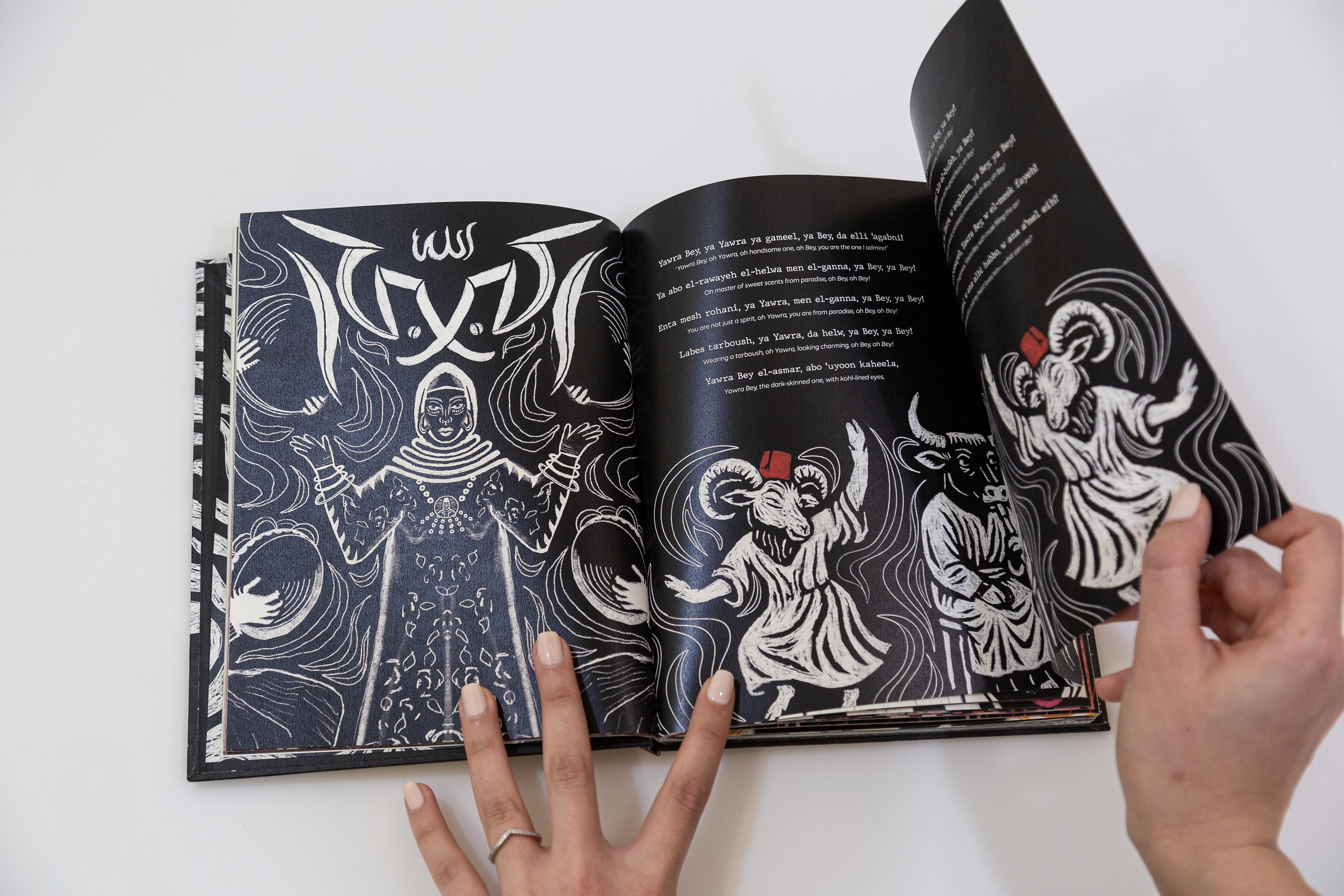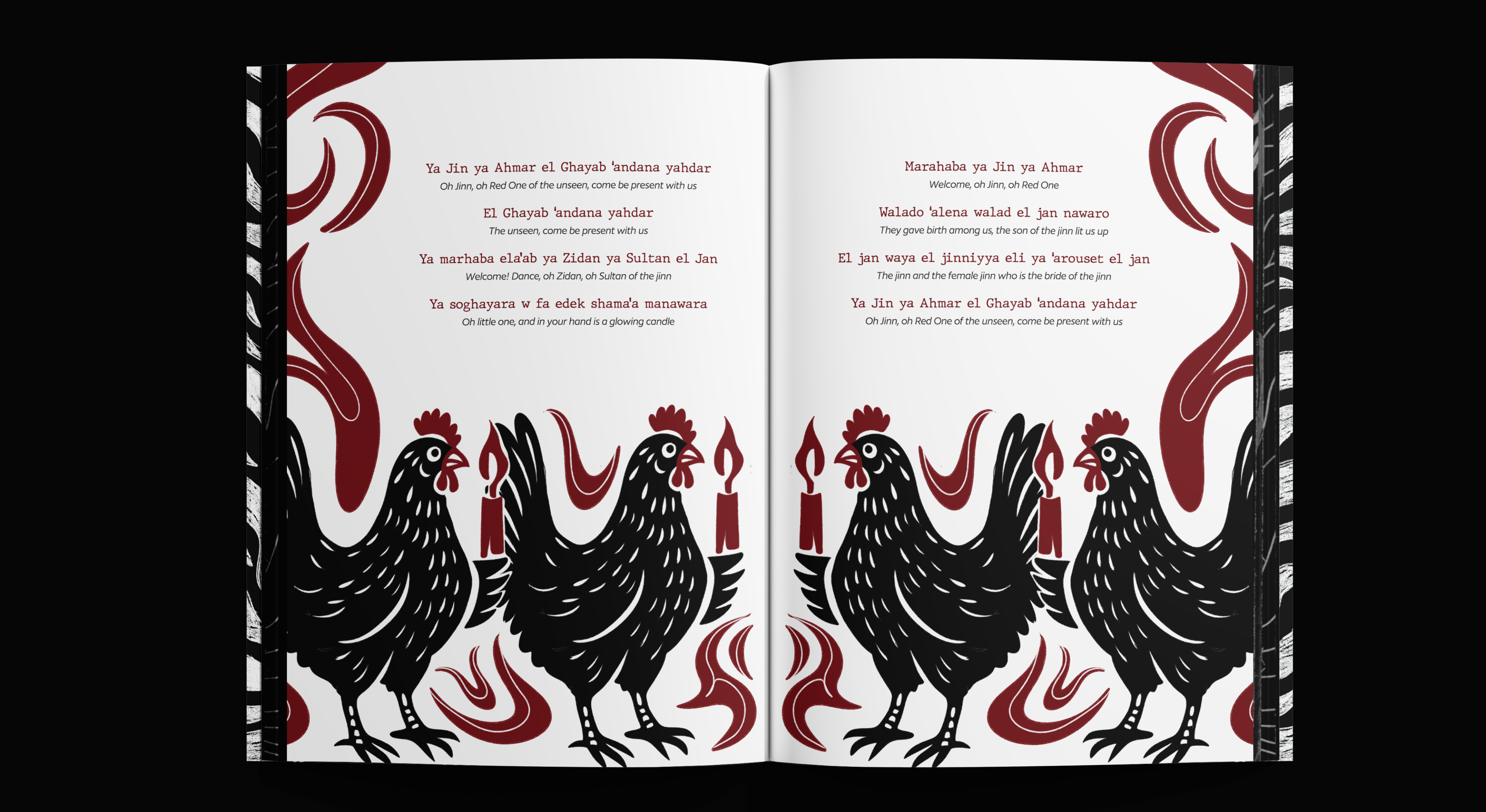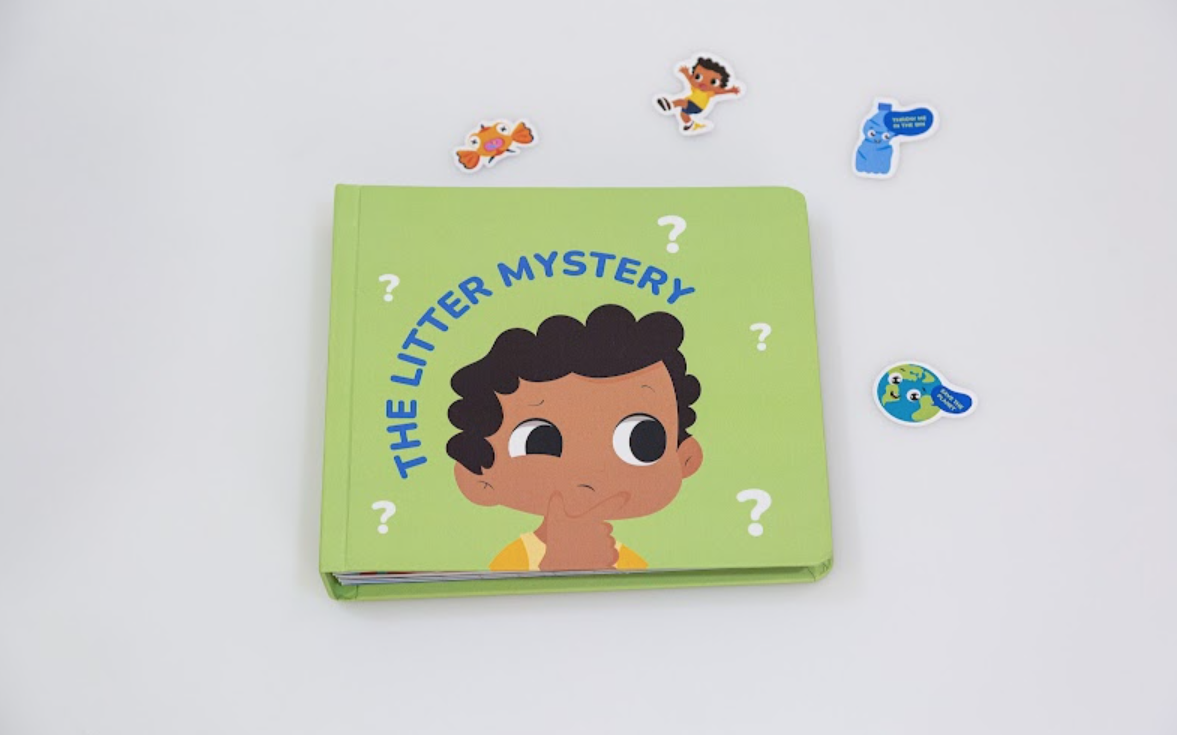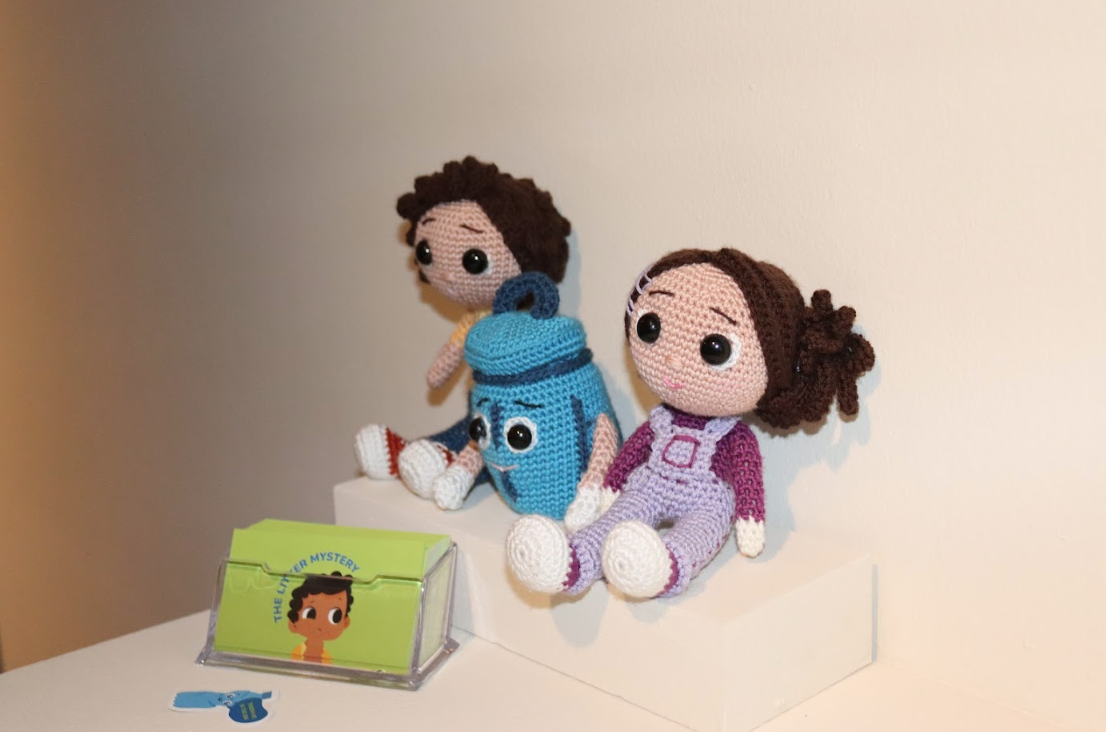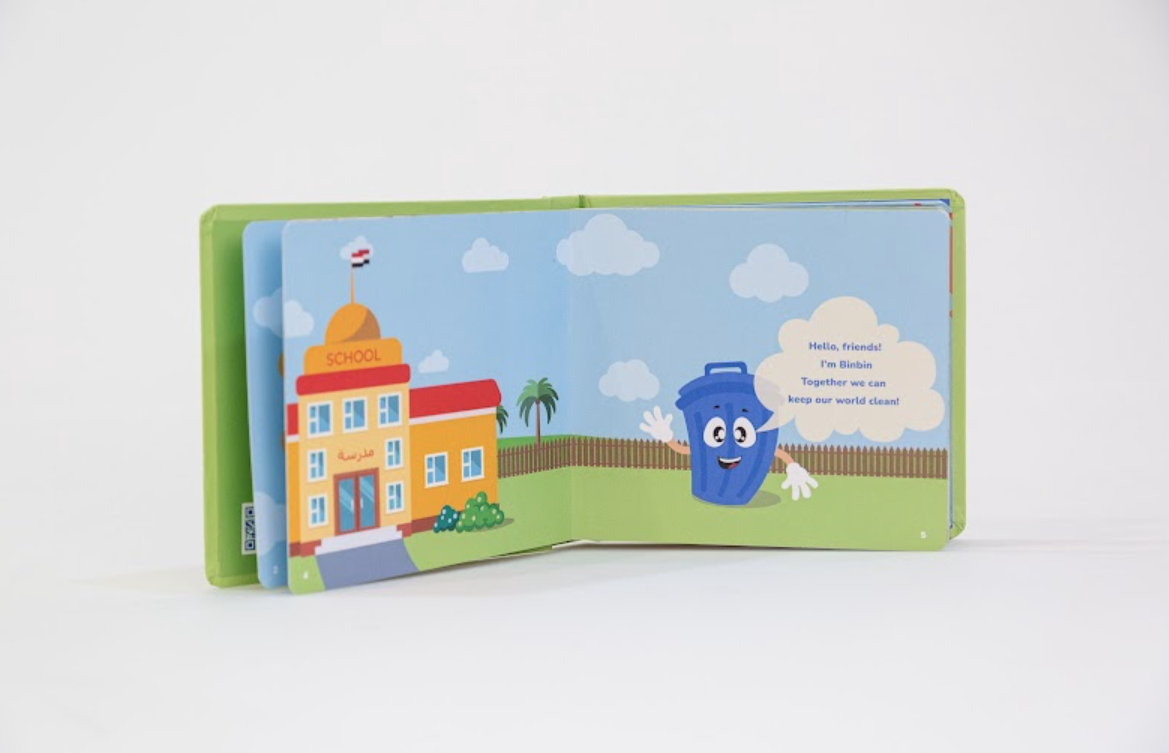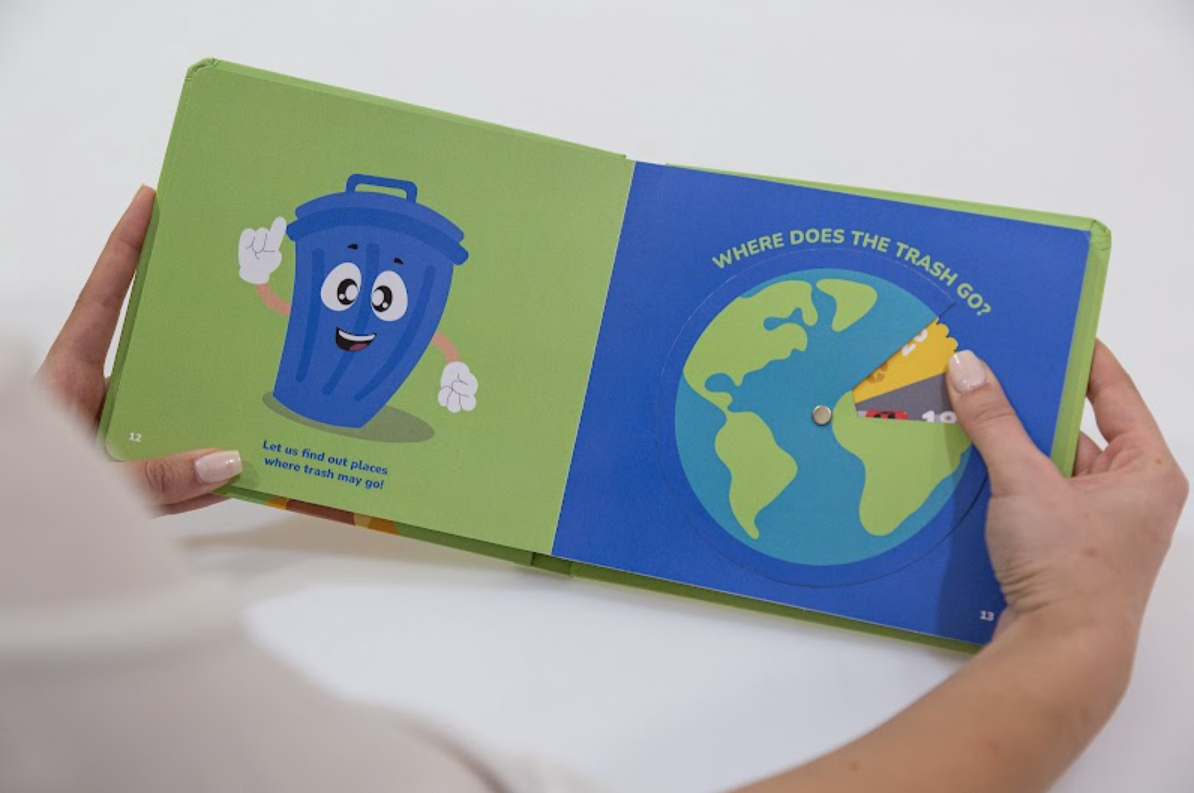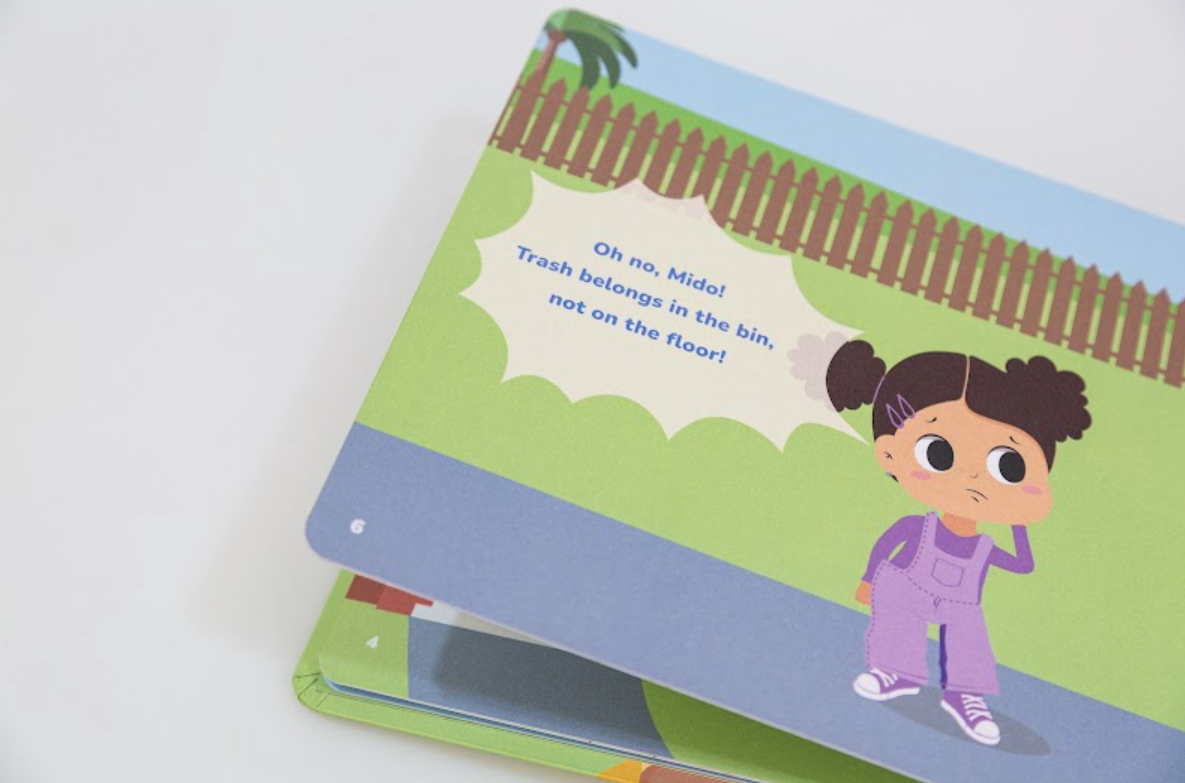Mounted on the exhibit wall, three black and white drawings by student artist Maram Alsayed ’25 display mystical scenes of animals with humanistic characteristics while flame-like patterns swirl in the background.
In the first scene, a man dressed as a medical doctor donning an Ottoman fez is surrounded by animals, including similarly dressed lambs holding hands and two chickens carrying a cane. The next scene depicts a shisha party with only one human attendee; the rest are animals. In the final drawing, a woman decorated with indigenous elements is holding up a doll, surrounded by chicken and Arabic religious text.
These drawings were already curious upon first glance, but a closer look revealed a QR code in the corner that brought the audience to a camera view on their phones where, suddenly, the drawings jumped to life. Color filled the characters as zar music started emanating from viewers’ phones. The characters from the scenes were alive, each of them telling a story with their audiovisual transformations.
Beneath the animated scenes was a book featuring the 12 ‘spirits’ from the scenes, with accompanying text in English and transliterated Arabic explaining the characters’ stories. “Zar has always been practiced, sung and felt but never visually imagined in detail,” said Alsayed. “This project gave me the opportunity to design and visualize 12 spirits based only on their songs, symbolic traits and cultural cues.” She is the first designer to visually imagine the spirits of the zar.
“The project contributes to preserving Egypt’s intangible cultural heritage, ensuring that a spiritual practice tied to healing, identity and cultural memory is not lost with time.”
Beyond bringing the tradition to life, Alsayed’s was a project in cultural heritage, preserving the Egyptian zar ritual through a visual archive. “Giving these spirits a form is a crucial step in protecting and honoring a belief system that is still recognized in Egyptian culture,” said Alsayed. “The project contributes to preserving Egypt’s intangible cultural heritage, ensuring that a spiritual practice tied to healing, identity and cultural memory is not lost with time.”
Illustration gave Alsayed the freedom to interpret each spirit’s identity, colors and sacrifices in the ritual, while augmented reality allowed her to incorporate sound and motion interactively. She said, “I studied rituals, lyrics and sacrificial practices, tracing the symbolic framework of the zar through a deep-dive into history and translations.”
Alsayed drew her inspiration from an authentic live zar music performance by the Mazaher Band. When speaking with performers, Alsayed was struck by one of their comments: Many of the traditional Egyptian songs have lost their meaning. “That moment became the seed of this project. Behind every chant or lyric was likely a story, a spirit and a history waiting to be uncovered,” she said.
The AUCian traced the origins of these songs and reimagined their lost narratives, structuring her project around the themes of the possessed, the summoned and the sacrificed — “the narrative framework of the zar ritual’s journey,” she said. “The zar has existed for generations but is often overlooked, misunderstood or undocumented.”



